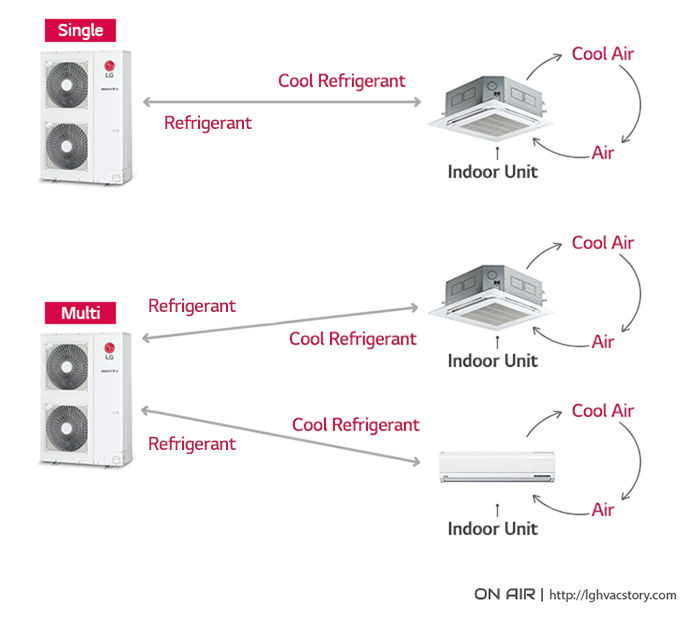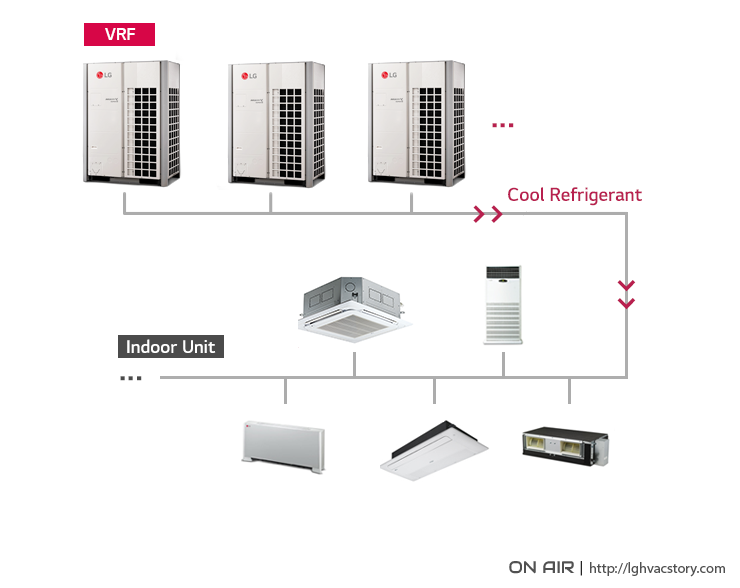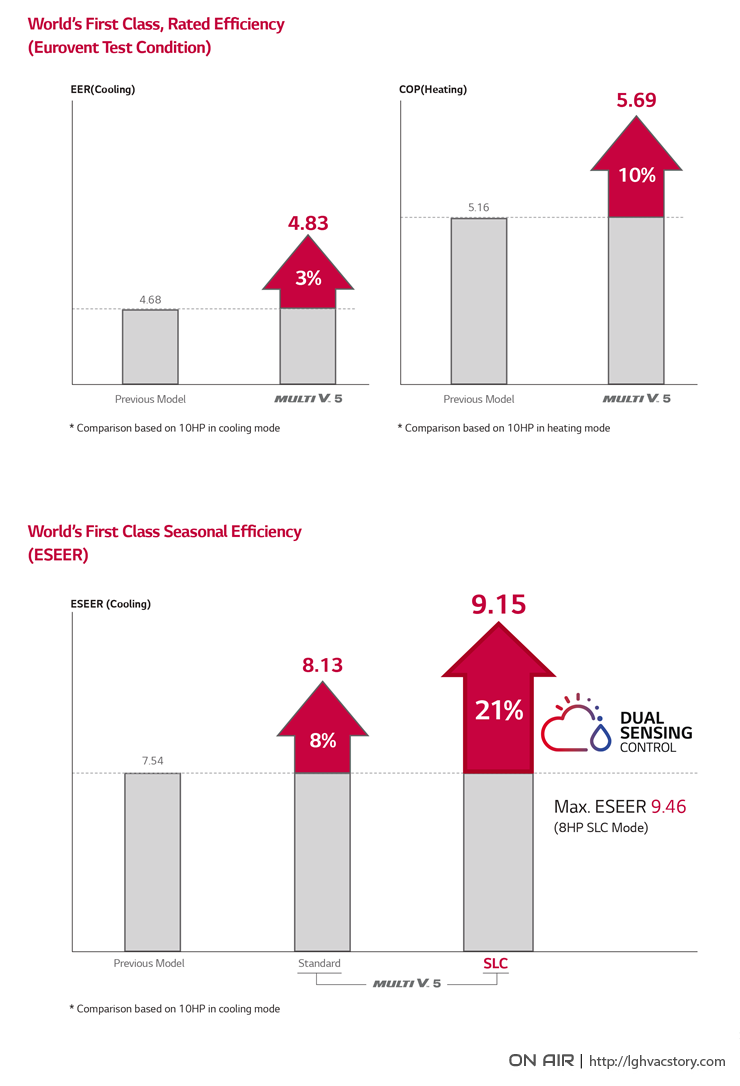VRF is a technology that can reduce energy losses and, thus, improve air conditioner efficiency in certain installations. It is a ductless air conditioning system configuration where one outdoor unit condenses refrigerant and supplies the refrigerant to multiple indoor units. This arrangement allows for customizable comfort control while simultaneously heating and cooling for each area in the building where the system is installed. The term variable refrigerant flow itself refers to the function of the technology that controls the amount of refrigerant that is supplied to the indoor units, which makes it possible to control multiple individual indoor units from one outdoor condensing unit. Control of the refrigerant flow is the core functionality of VRF systems that contributes to their many advantages over other systems in certain environments.

Single and Multi Unit Installations

Multi-to-multi VRF Flow Diagram
Ductless air conditioning systems are fundamentally different from ducted systems in the way they transfer heat. VRF systems circulate refrigerant to indoor units that cool the immediate area where the indoor units are located. There are single unit ductless systems where one single outdoor compressor supplies refrigerant to a single indoor unit like the ones typically found in small one room homes or offices. There are also more complex ductless systems that can have multiple outdoor units feeding refrigerant to multiple indoor units. These larger systems are found in larger buildings.
Ducted systems cool air in an outdoor condenser and then distribute the cool air through ducts into the building where it is installed. A ductless VRF system makes it possible to have a modular system which is much easier to install than conventional air conditioning systems. This type of modular system provides flexibility in system designs and this makes them ideal for retrofitting air conditioning into historical buildings without compromising the building structure. Maintenance for VRF systems is made easier with their sophisticated controls and near plug-and-play compatibility. VRF systems controls also offer precise room temperature control as each indoor unit can be set individually for each area in a building. Another advantage of VRF systems is that they can eliminate duct airflow losses, which are estimated to be between 20% and 30%.
LG Multi V 5 VRF Solution
LG Electronics also offers a VRF solution in their new LG Multi V 5. The Multi V 5 provides enhanced efficiency that eliminates losses occurring in other systems. The Multi V 5 compressors, specially designed heat exchange systems and inverter technology, minimize energy consumption to levels that were previously unattainable with non-VRF systems. Precise temperature control ensures system efficiency, user comfort and better dehumidification. The improved efficiency of Multi V 5 not only reduces costs but also reduces emissions that are harmful to the environment while increasing building value. The Multi V 5 indoor units come in a wide array of styles to fit any interior design and the low noise emissions promise a comfortable environment.

Multi V 5 Ultimate Efficiency


































